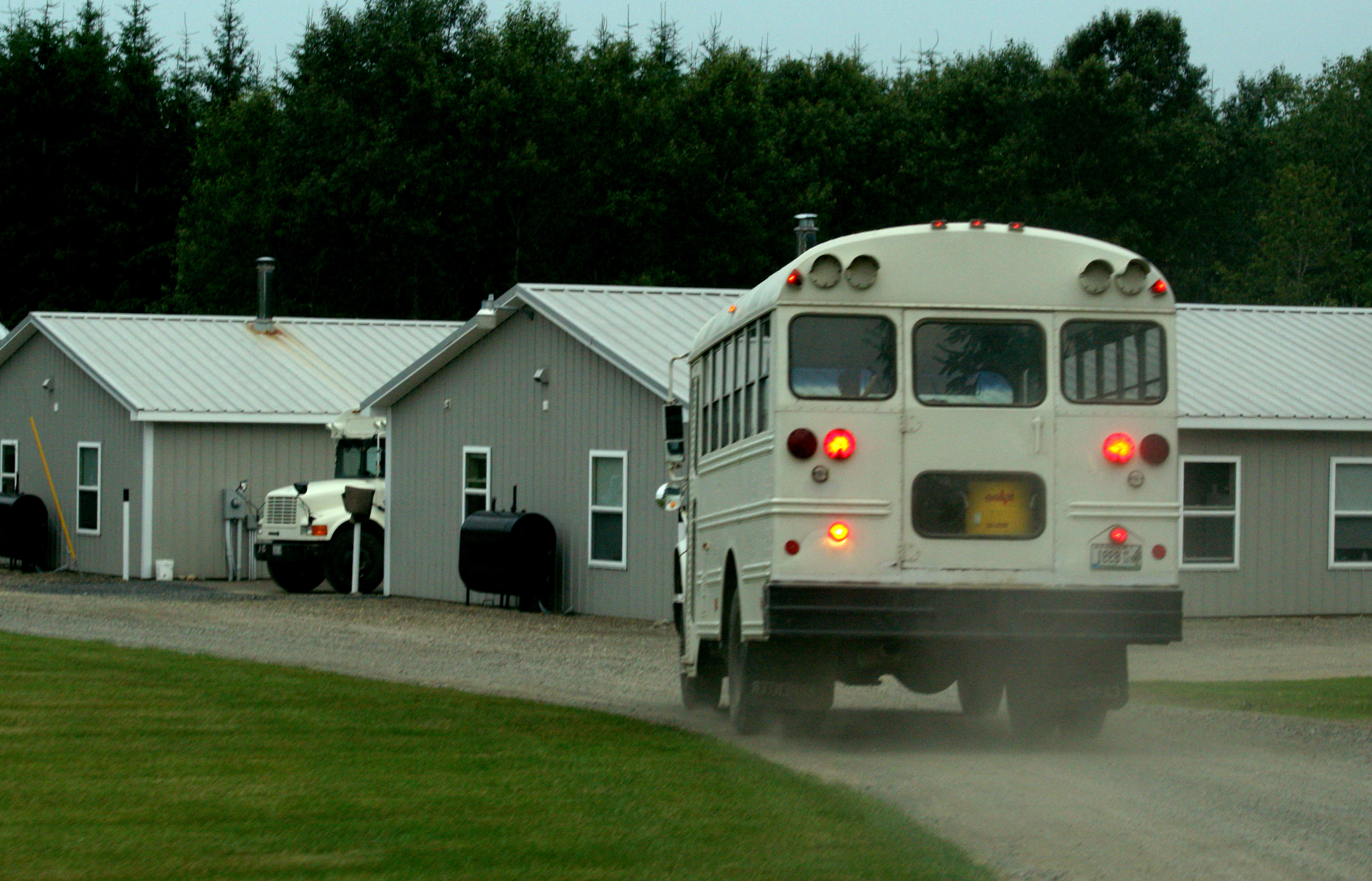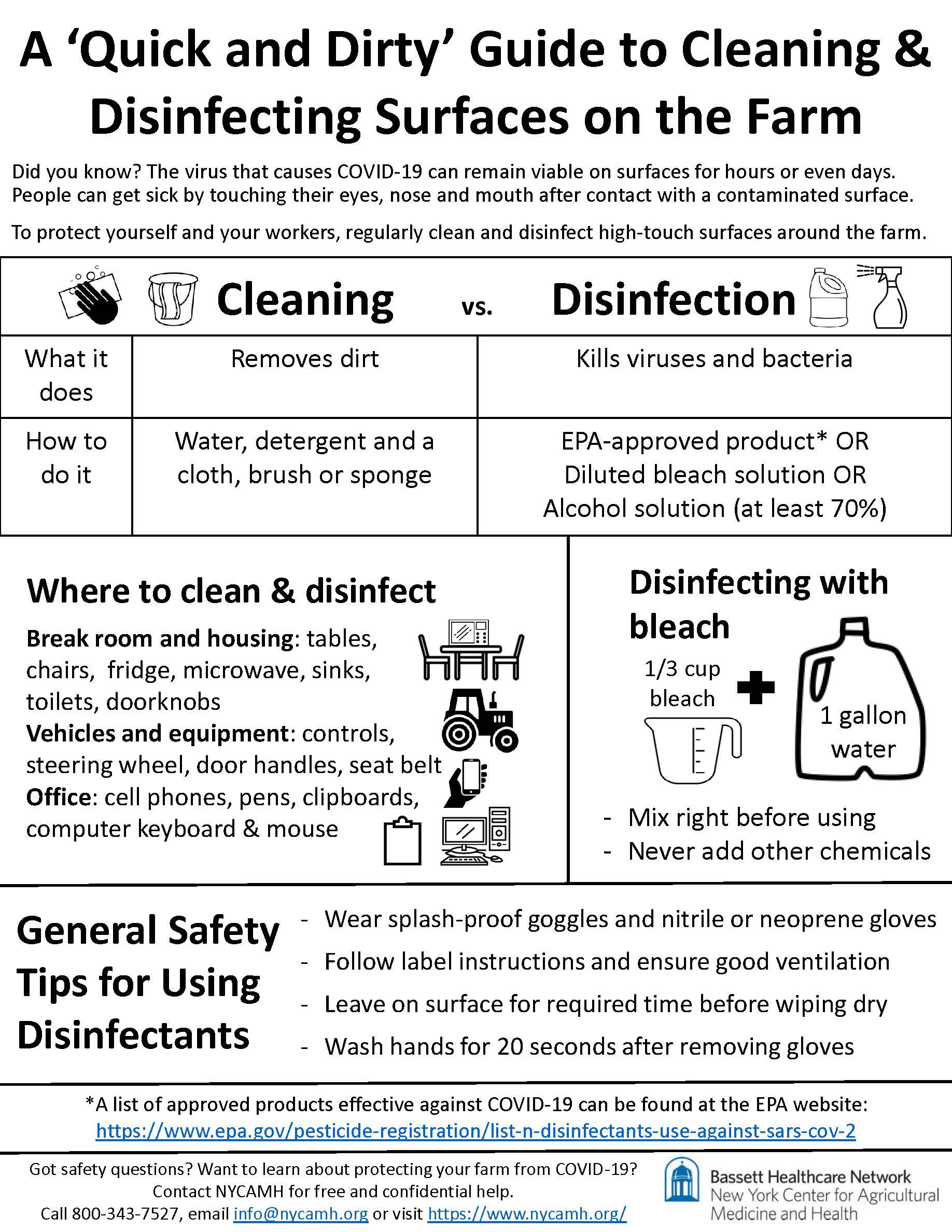News

Safely Transporting Workers during the COVID-19 Pandemic - May 8, 2020
By Jim Carrabba
NYCAMH Agricultural Safety Specialist
Farmworkers often travel together in crowded pickup trucks, vans and buses, making social distancing a challenge. The New York Center for Agricultural Medicine and Health (NYCAMH) has developed the following guidance to help keep workers safer while traveling.
The virus that causes COVID-19 is thought to spread mainly from person to person, mainly through respiratory droplets produced when an infected person coughs, sneezes or talks. These droplets can land in the mouths or noses of people who are nearby or possibly be inhaled into the lungs. Spread is more likely when people are in close contact with one another (within about 6 feet), or when touching their eyes, nose and mouth after contact with contaminated surfaces. People without symptoms can spread the virus.
These following steps may reduce productivity but are essential to protect workers from being infected with the virus. Widespread infection among workers could be catastrophic to a farm operation.
Best Practice:
Whenever possible, assign one worker per vehicle during the COVID-19 pandemic.
Guidelines for Transporting Multiple Farmworkers:
- Before and after each trip, all workers should wash their hands with soap and water for 20 seconds and dry them with a single use paper towel. Have a place for handwashing near the start and end locations of the trip. This link provides information on how to build a handwashing station for about $20 https://www.necenter.org/covid-19/updates.php?id=138
- If a place for handwashing is not readily available, provide hand sanitizer with at least 60% alcohol.
- Limit the number of passengers in vehicles to maintain six feet distance. This may require using more vehicles, or taking more trips with fewer passengers per trip.
- Stagger start times or shifts so that fewer workers need to be transported at the same time.
- Everyone in the vehicle, including the driver, should wear cloth masks that cover the mouth and nose. Cloth face masks need to be washed daily. Recent research from Northeastern University has found that covering a cloth face covering with hosiery material can increase effectiveness by 15 to 50%. Separate NYCAMH research has shown that masks containing an inner layer of non-woven material (e.g. sewing interfacing) increases the filtering ability significantly over just a layer or two of cotton.
- Keep windows open to increase ventilation.
- In pickup trucks, there should only be two people in the vehicle, the driver and passenger. They should sit as far apart as possible. Consider installing a physical barrier between the driver and passenger seats. In a crew-cab pickup truck, have the passenger ride in the back seat on the passenger's side.
- General recommendation for vans and buses:
- Maintain six feet between passengers.
- Consider installing physical barriers.
- Allow ample time for passengers to enter and exit to maintain proper social distancing.
Clean and Disinfect the Vehicles. Pay close attention to all high touch surfaces in vehicles such as railings, door handles, steering wheels, dashboards, levers, knobs, buttons, switches, touch screens, seats, armrests, and seatbelts. This should be done after each trip, or at least daily.
Cleaning vs. Disinfecting
CLEANING: Removes visible dirt and must be done first, otherwise disinfecting will not work. Use water, detergents, and steady friction from a cleaning cloth, brush or sponge.
DISINFECTING: Kills viruses and bacteria. Only apply disinfects on surfaces, never skin. Use products appropriate for the specific surface.
Before disinfecting: Follow manufacturer's instructions for application and proper ventilation. Check that the product is not past its expiration date. Wear splash-proof googles and nitrile or neoprene gloves while working with disinfectants that spray or could splash.
Products to use for disinfection:
Diluted household bleach: Unexpired household bleach will be effective against coronaviruses when properly diluted. Never mix household bleach with ammonia or any other cleanser. To make a bleach solution, mix:
-
5 tablespoons (1/3rd cup) bleach per gallon of water OR4 teaspoons bleach per quart of water
EPA-registered household disinfectants: A list of approved products effective against COVID-19 can be found at the EPA website: : https://www.epa.gov/pesticide-registration/list-n-disinfectants-use-against-sars-cov-2
- Alcohol solutions: Ensure solution has at least 70% alcohol
- Allow the disinfectant to remain on the surface for its required contact time before wiping the surface dry.
After cleaning/disinfection:
- Remove gloves and immediately wash hands with soap and water for at least 20 seconds. Dry with a clean paper towel.
- Discard paper towel and any disposable materials used to clean or disinfect in a sealed leak-proof garbage bag.
Resources:
How to Protect Yourself and Others from Coronavirus
https://www.cdc.gov/coronavirus/2019-ncov/prevent-getting-sick/prevention.html
Cleaning and Disinfecting Your Home
https://www.cdc.gov/coronavirus/2019-ncov/prevent-getting-sick/disinfecting-your-home.html
Cleaning and Disinfecting Non-Emergency Transport Vehicles
What Rideshare, Taxi, Limo, and other Passenger Drivers-for-Hire Need to Know about COVID-19
NYCAMH, a program of Bassett Healthcare Network, is a not-for-profit, non-regulatory organization committed to enhancing agricultural and rural health by preventing and treating occupational injury.


